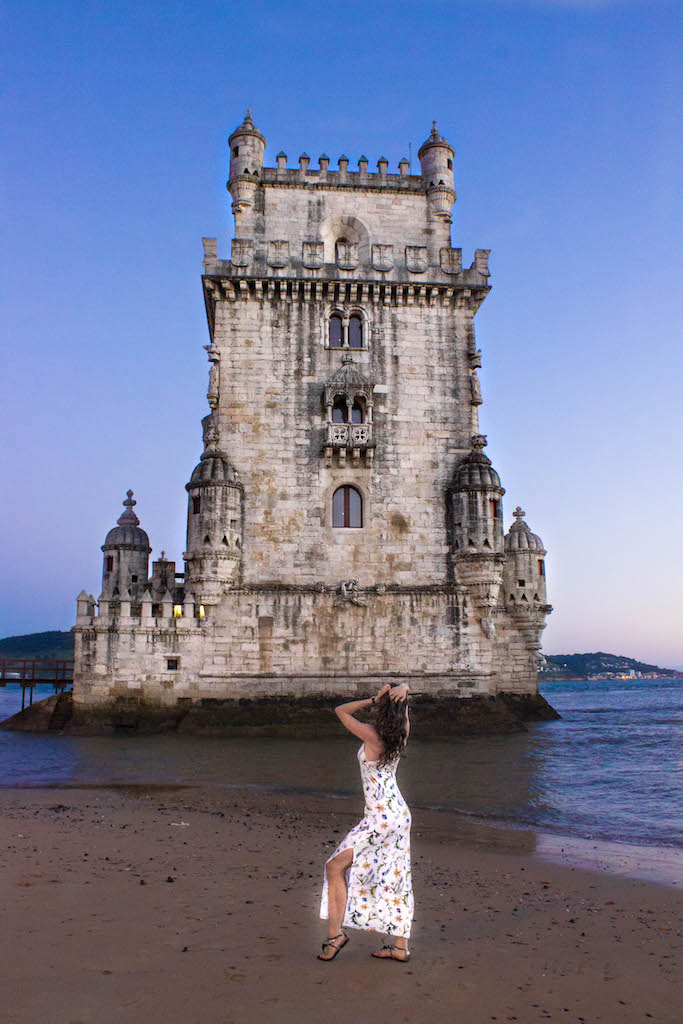
Lisbon was built next to the water – something that benefits the soul of the great seafaring nation. No matter which part of the city you’re in, you’ll never be far from the Tagus River.
Major events in Lisbon’s history have taken place within sight of the river – the departure of the caravels and their return with Brazilian gold, the tsunami that followed the 1755 earthquake and the assassination of a king and royal heir. The Tagus has become more of a landmark than a river, visible from nearly all of the city’s lookout points that crown it’s hills.

Along the river, a promenade hugs the shore, where Lisboetas and visitors from all over the world sit, picnic, stroll, and cycle. Sailors, ocean lovers, and seafarers can be found navigating ships, sailboats, and yachts on its blue waters. Coffee lovers sip on cappuccinos and enjoy Pastels de nata as they take in the beautiful view.

Ocean lovers can hop aboard a luxurious sailing yacht with Tagus Cruises and enjoy a new perspective of Lisbon – one witnessed by the entire royal court as they fled to Brazil in the 18th century to escape Napoleon’s advancing armies. It’s a practically intimate experience during their sunset cruise – there was only four of us and a skipper. During the two hour experience, guests can enjoy complimentary wine and beer while taking in views of the city.

The stately boat glides by the elegant Torre de Belém, which has proclaimed the city as the capital of a superpower, trumpeting its strength to approaching ships since the 16th century. To view such stunning Manueline architecture from afar on a regal yacht made me feel as if I were royalty.

Its history is as elaborate as its facade – once a fortress on an island then later a prison – the structure was one of the only buildings undamaged from the 1755 earthquake. Its strength shown when the river was quite literally moved around it to alter the landscape. Today, it sits on the waters edge, though still surrounded on three sides by sea.

Further up the river, we sail past the Padrão dos Descobrimentos; a symbol of national pride that highlights Portuguese nobility and explorers, and under the 25 de Abril Bridge; named after the Portuguese Carnation Revolution – the fall of dictatorship in Portugal. Eventually ending the sail at Praça do Comércio; a great, arcade-lined square that would act as a grand, theatrical stage for the arrival of kings, presidents, and ambassadors. Today it is home to outdoor eateries, a large Welcome Center, and the interactive Lisboa Story Center.
To view Lisbon from the Tagus River is to see it shine. In a city filled with sloping hills and slippery sidewalks it is a nice escape to glide along it’s edge – to gaze at it from afar. As the sun sets on the city, it’s golden city lights began to emerge; shaking off the heat of the day.

Erich Maria Remarque once wrote “By day Lisbon has a naive theatrical quality that enchants and captivates, but by night it is a fairy-tale city, descending over lighted terraces to the sea, like a woman in festive garments going down to meet her dark lover.” As the last ray of sunlight disappeared from view, I stepped from the yacht. He couldn’t be more true.
We were guests of Tagus Cruises, however, the opinions are my own. The sunset cruise is 45€ per person. To book this trip or see their other sails visit taguscruises.com.
















This site is protected by reCAPTCHA and the Google Privacy Policy and Terms of Service apply.